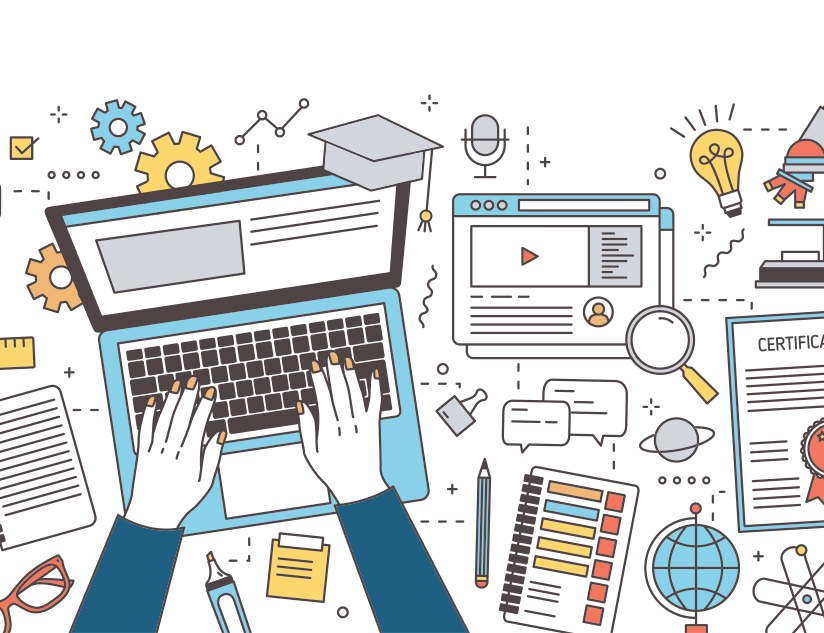Formerly known as vocational training, Career and Technical Education (CTE) has been garnering a lot of attention in recent times. There is a good reason for that. CTE is the most effective way to teach real world and career skills to students, helping the educational system respond to the evolving needs of the global economy.
Some of the elements of CTE programs that stand out for students as well as parents are:
- High quality CTE programs address career and college readiness goals, teaching real world skills and competencies; such as collaboration, critical thinking, problem solving, teamwork, innovation and communication.
- CTE programs are aligned with economic and labor market demands. This ensures employability for students, when they join the workforce.
- CTE programs make use of appealing learning methods, such as learning by doing. With such methods, students are better engaged and motivated, leading to lower drop-out rates. In fact, 93% of the students who focused on CTE programs graduated, compared to a national average of 80%, according to the Association for Career & Technical Education.
Some of the areas where CTE programs are being effectively used are computer technology, physical therapy/sports medicine, television production, early childhood education, photography, food service, banking, finance and investment, and automotive technology.
How CTE Helps Students Become College and Career Ready
CTE is no longer just about teaching students a narrow set of skills, sufficient for entry-level jobs. It has evolved to prepare students for fruitful careers. Some of the ways it prepares students are:
- CTE pathways make use of contextual, applied learning, which helps students in seeing the relevance of what they are learning and how it can be applied in real life.
- CTE also makes use of linked learning. In this approach, the state and local businessmen directly engage with the education system to enhance the relevance of CTE programs. This partnership helps provide real world learning, including firsthand experience of industry challenges, use of technical equipment and guidance by experts.
- CTE incorporates project-based learning, teaching students the how and why of each aspect. In addition, it teaches students how to apply these skills to real life settings. They can experiment and learn. This keeps them interested in learning.
- Another benefit is that CTE allows students to focus on one of the 5 different academies: hospitality and tourism, finance, information technology, health sciences, or engineering. When students learn things of their choice, they tend to work harder. Plus, they can qualify for NAFTrack Certified Hiring, which helps students get special consideration for employment.
Career and Technical Education in Practice
CTE programs are provided through different institutions, including regional technology centers, high schools, community colleges and part-time or shared technical high schools. At the secondary education level, such programs are delivered with the help of smaller centers, housed in high schools. They can also be taught off-campus, at their home high schools.
CTE courses are also offered as dual enrollment programs. These allow students to take courses that provide high school as well as post-secondary level credits.
However, for CTE to be effective, the mode of education delivery is crucial. This is where a robust digital learning platform, like MagicBox™ can be of huge help.
Maximizing CTE Efficiency with MagicBox™
Powerful learning platforms, such as MagicBox™, offer multiple benefits for educators, students and educational publishers in delivering Career and Technical Education, such as:
Learn by Doing
With the help of MagicBox™, students can apply their knowledge in simulations of real-life scenarios without having to face any risk if their attempts fail. A great example of this is the use of virtual learning in understanding automobile engineering. Students can look at virtual models of engines, transmissions, and other parts of automobiles. There are even interactive games and elements that help students gain familiarity and understanding how it all works in a fun way.
Personalized Support
With digital learning, students are placed in the center of the learning experience. The learning experience is different for each student since they get to study according to their preferred learning style on their favorite device and at a convenient time. They also have the flexibility to progress at their own pace. If students do not understand a concept, they can access other content formats for easier comprehension, such as exemplary videos.
Higher Engagement
One of the ways CTE aims to improve student engagement is through innovative teaching practices. This is made possible with a learning platform. The current generation does not want to go through page after page of text. With MagicBox™, learning can include games, videos, audio, puzzles, infographics, quizzes and much more. The inclusion of such virtual learning formats can improve engagement levels by 70%.
Lower Costs
CTE programs make use of a large amount of equipment, textbooks, learning aids and workbooks, which can all prove to be really expensive. However, with an advanced learning platform, these costs can be significantly reduced. This helps in making CTE education much more inclusive for students. In addition, the costs and speed of delivery of updated information also decline for publishers and educational institutions.
Have you checked out how a powerful digital learning platform can improve the outcome of your CTE courses? Contact us to know more.







